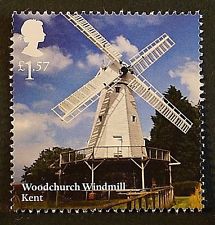In a study of 26 rivers and streams across England, Scotland, Wales and Northern Ireland carried out by the Environment Agency and its regional equivalents, the Somerhill Stream had the third highest concentration of the chemicals, after the River Waveney in Norfolk and the River Tame in the West Midlands. The stream in Tonbridge that flows into the River Medway has emerged as the third worst in the country for neonicotinoid pollution, threatening its insect population. Other Kentish rivers such as The Medway and The Beult were not among those tested.
The Somerhill Stream rises near Longfield Road in High Brooms and flows five miles before joining the River Medway just below Eldrige Lock in Tonbridge. It actually had the highest concentration of one particular type of neonicoinoid known as imidacloprid, though it had no trace of two of the other chemicals in the group and only average amounts of the other two. The findings were published last month, though the readings relate to tests conducted in 2016.
Matt Shardlow, the chief executive of Buglife, said: “It is vital that action is taken to completely ban these toxins, including in greenhouses and on pets, before another year of disgraceful pollution occurs.”
Mark Lloyd, chief executive of the Angling Trust, said: “These results are highly alarming in the context of widespread declines in aquatic insect life and fish populations. We urge the government to act urgently to ban continued use of these chemicals to protect wildlife, fisheries and drinking water supply.”
Neonicotinoids were banned from use on flowering crops in 2013 as a measure to protect the bee population, but there is at present no legal limit on the level of neonicotinoid pollution in freshwater.
Source: Kent Online, 22 Jan 2018
http://www.kentonline.co.uk/malling/news/kent-stream-third-most-pollute…

- Login om te reageren
